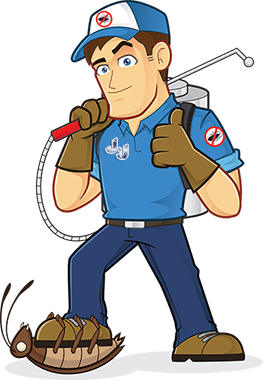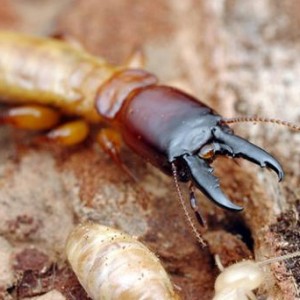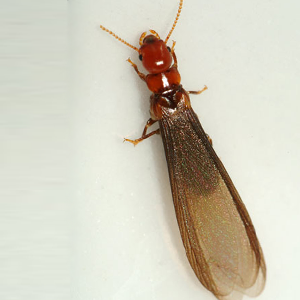
GOT TERMITES?
CALL VC PEST CONTROL FOR YOUR TERMITE INSPECTION!
WE OFFER SPECIAL RATES FOR:
- FIRST TIME CUSTOMERS
- VETERANS
- & REAL ESTATE AGENTS
Termites are no fun and in most cases once you notice you have them, serious action may need to be taken. See something inspect something is the way to go. If you are suspicious, don’t want to order a termite inspection. Inspections in some cases are free and give you peace of mind knowing that if there is an issue, you caught it early.
Are you buying a home? Doesn’t matter if it’s a brick home, get a termite inspection ordered. We offer a variety of discounts such as first time clients, if you’re a veteran and if you’re a realtor for your clients.
Do you see little holes in your drywall? Call us now! You most likely have some sort of infestation that needs treatment before it is too late.
How often should an inspection be ordered? We recommend once a year depending on the location and surrounding environment of your home or building.
Where do you inspect? Our certified techs will thoroughly inspect your home. They will wear the necessary gear to inspect your attic, crawl space(if you have one) and carry a variety of ladders to reach any areas needed.
What should I except if you come out for an inspection? On time, friendly services from our certified technicians . They are very thorough and will provide you with a detailed written report as well as a detailed verbal summary once inspection has finished.
DAMPWOOD TERMITES
 Dampwood termites eat across the grain of the wood, consuming both spring and summer wood. By doing this, they make a series of chambers/galleries connected by tunnels whose walls are smooth as if finely sandpapered. There is no soil in the galleries, but if conditions are extremely damp, the fecal pellets will stick to the gallery walls and/or form clumps or paste. If conditions are dry, the fecal pellets accumulate at the bottom of the galleries or are expelled the same way as drywood termites do. They use their fecal pellets to seal off galleries or wood, similar to how subterraneans use soil.
Dampwood termites eat across the grain of the wood, consuming both spring and summer wood. By doing this, they make a series of chambers/galleries connected by tunnels whose walls are smooth as if finely sandpapered. There is no soil in the galleries, but if conditions are extremely damp, the fecal pellets will stick to the gallery walls and/or form clumps or paste. If conditions are dry, the fecal pellets accumulate at the bottom of the galleries or are expelled the same way as drywood termites do. They use their fecal pellets to seal off galleries or wood, similar to how subterraneans use soil.
Swarming termites usually happen at night. They are attracted to lights. The time of year when this happens depends on the type of termite. Pacific Dampwood termites swarm mainly in August-October.
You can control termites by getting rid of the moisture that they need to survive and by making sure there is no wood-to-ground contact. You can also replace or treat the infested wood. If you live in an area where termites are a problem, you may want to treat the soil and/or wood with a pesticide that is specifically labeled for use against termites.
WESTERN DRYWOOD TERMITES
 Drywood termites eat across the wood grain. They make tunnels and chambers that are connected. Their walls are smooth, and there is no soil. There are usually fecal pellets present which look like hard, small eggs with 6 sides. Signs of an infestation include swarmers, shed wings, piles of pellets, termite plugs which seal all openings in infested wood, and surface blisters caused by older galleries close to the wood surface. Damage to wood happens slowly over time. Under optimal conditions (temperature of 80-90 degrees Fahrenheit and 50% relative humidity), it has been estimated that one drywood termite consumes about 0.59mg of wood per day. This means that a colony of 1,000 mature. Be aware that it would take a drywood colony about 7+ years to reach this size. Swarmers often come back to the same place. Each year, they cost $250 million in damage and treatment in California and Arizona.
Drywood termites eat across the wood grain. They make tunnels and chambers that are connected. Their walls are smooth, and there is no soil. There are usually fecal pellets present which look like hard, small eggs with 6 sides. Signs of an infestation include swarmers, shed wings, piles of pellets, termite plugs which seal all openings in infested wood, and surface blisters caused by older galleries close to the wood surface. Damage to wood happens slowly over time. Under optimal conditions (temperature of 80-90 degrees Fahrenheit and 50% relative humidity), it has been estimated that one drywood termite consumes about 0.59mg of wood per day. This means that a colony of 1,000 mature. Be aware that it would take a drywood colony about 7+ years to reach this size. Swarmers often come back to the same place. Each year, they cost $250 million in damage and treatment in California and Arizona.
Drywood termites swarm and fly into structures. They infest the wood directly. When they swarm, they often come back to the same structure. They usually first invest in exposed wood such as window/door frames, trim, eaves, attics, etc.
There are a few ways to get rid of termites. The best way to do it is by fumigation, or by treating the wood where they are living. If the termites are living in many places, or if they are hard to get to, then you should use fumigation. If there are only a few termites and they are easy to reach, then you can use pesticides that are meant for this kind of situation.
WESTERN SUBTERRANEAN TERMITE
Subterranean termites eat mostly the softer wood, which they prefer over the harder wood. This is why you might see damage that looks layered. Sometimes there might be soil present in the galleries.
Colonies are usually located underground. They are usually below the frost line, but above the water table and rock formations. Colonies build mud tubes to cross areas of adverse conditions between the colony and food sources. They can enter structures through cracks less than 1/16” wide. However, if a constant source of moisture is available (i.e. leaky pipes), colonies (called secondary colonies) can exist above ground and without ground contact
You can control termites by using a chemical treatment, an in-ground monitoring system, and by getting rid of all wood-to-soil contact. You should also remove any wood debris and keep the wood moisture content below 20%. If there is a secondary infestation, you can treat it by injecting or spraying a pesticide on the surface. There are also bait systems that you can place directly on the infested wood.
Bell Canyon | Calabasas | Camarillo | Encino | Granada Hills | Hidden Hills | Lake Sherwood | Malibu | Moorpark | Newbury Park | North Ranch | Oak Park | Oxnard | Port Hueneme | Porter Ranch | Sherman Oaks | Simi Valley | Somis | Tarzana | Thousand Oaks | Topanga | Ventura | Westlake Village | Wood Ranch
